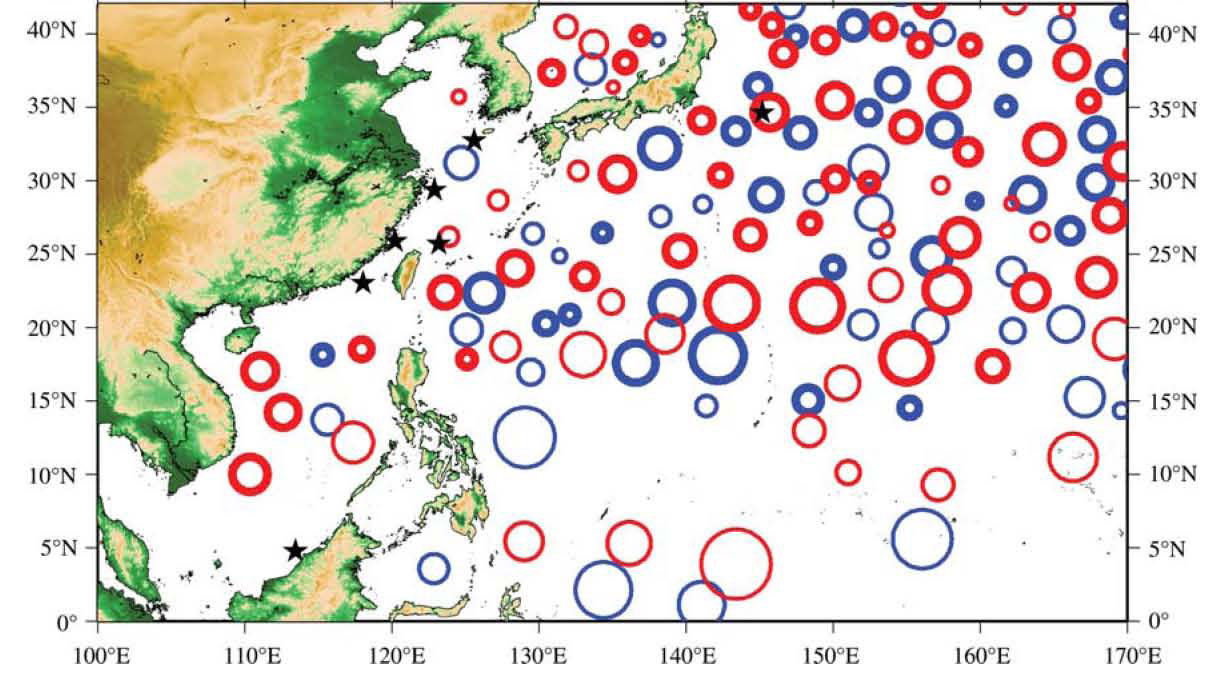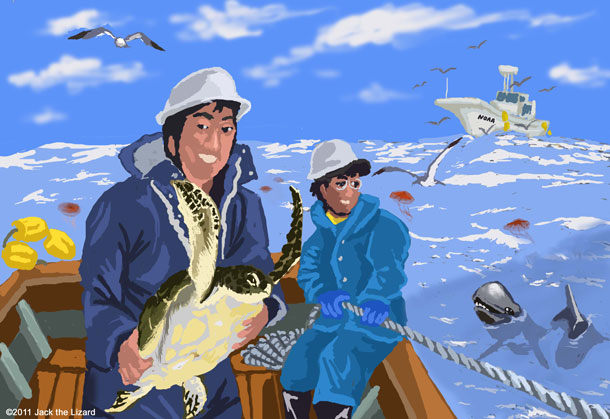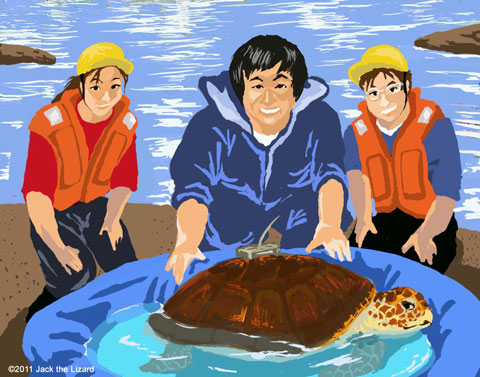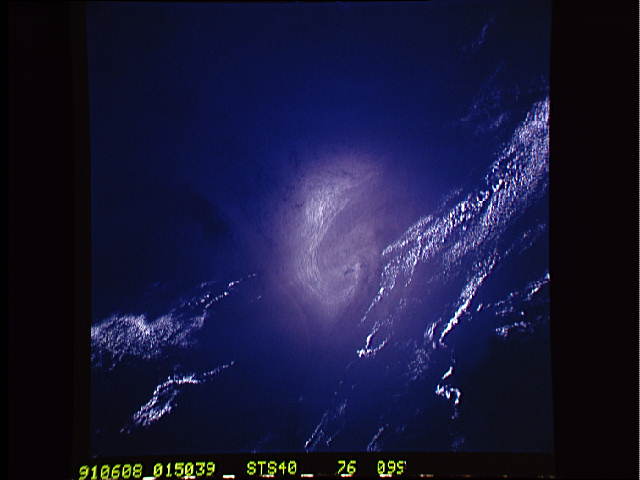
|
|
|
|
Loggerhead sea turtle research
by NOAA (National Oceanic and Atmospheric Administration)
continue
Investigating Loggerhead sea turtle in the western North Pacific |

Jack the Lizard |
Loggerhead sea turtles are long-lived, wide-ranging species. They inhabit vast open ocean, therefore it is very difficult to survey their behaviour and habitat. However the satellite data provides special opportunity to observe their pelagic life. Until now satellite tags revealed many aspect of loggerheads’ life in the World Oceans such as the Mediterranean Sea and the North Pacific. In the North Pacific loggerheads are born at their nesting sites in Japan and they move from there to off the coast of Baja California. During this travel they live and forage in open sea. Despite all the North Pacific loggerheads population is originating from Japan, they do not directly cross the Pacific Ocean and some are found in the western North Pacific. In the western North Pacific loggerhead turtles are often caught by Taiwanese fishery. Currently the population of loggerheads in this region is in a healthy condition in spite of accidental catch. Since this part of population is very valuable in the world wide, it is important to know the relation between loggerheads and oceanic features in this region. For that reason NOAA investigated the movement of loggerhead turtles and the mesoscale eddies (circular motion of ocean current).
|
Eddy and Turtles
|
Prior to this study 34 non-reproductive turtles were caught as bycatch in the Taiwanese fishery. In this study all those turtles were tagged with satellite transmitters and released at the northeast corner of Taiwan. Tracking started from May 2002 and ended in June 2009. Data from the satellite tags provided daily turtle positions, while these data were also compared with eddy tracks on the study area. The satellite also sent the oceanographic data to indicate each eddy character such as size, rotation speed, strength and direction, either cyclonic or anticyclonic.
|


A specific example of eddy size and location on 25 May 2005. Blue represents cyclonic eddies and red for anticyclonic. Thicker circles characterize strong eddy. Black stars indicate the location of turtles. |
The East China SeaSeveral features of turtle movement were demonstrated by examining data from satellite. First, most of the tagged turtles stay in a region between Taiwan, China, Japan, and South Korea. Especially many turtles remained in the East China Sea continental shelf. Dr. Donald R. Kobayashi, NOAA Fisheries Pacific Islands Fisheries Science Center explains this result.
Second, Eddy activity was apparent over the entire region during the study period. Then some turtles outside of hotspot likely stay close to eddies. “There are differences between the hotspot turtles and the offshore turtles. I think eddies offer more food opportunities for items like jellyfish, which may be more important for turtles far from shore, away from the hotspot. But more analyses are needed to know this pattern” said prudently Dr. Kobayashi. |
|
"Loggerhead turtle (Caretta caretta) movement off the coast of Taiwan: Characterization of a hotspot in the East China Sea and investigation of mesoscale eddies" Donald R. Kobayashi, Pacific Islands Fisheries Science Center, NOAA, Honolulu, Hawaii, USA I-Jiunn Cheng, Institute of Marine Biology, National Taiwan Ocean University, Keelung, Taiwan, ROC Denise M. Parker, Joint Institute for Marine and Atmospheric Research, University of Hawaii, Honolulu, Hawaii, USA Jeffrey J. Polovina, Pacific Islands Fisheries Science Center, NOAA, Honolulu, Hawaii, USA Naoki Kamezaki, Sea Turtle Association of Japan, Nagao-motomachi, Hirakata City, Osaka, Japan George H. Balazs, Pacific Islands Fisheries Science Center, NOAA, Honolulu, Hawaii, USA |





